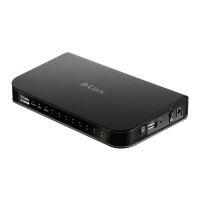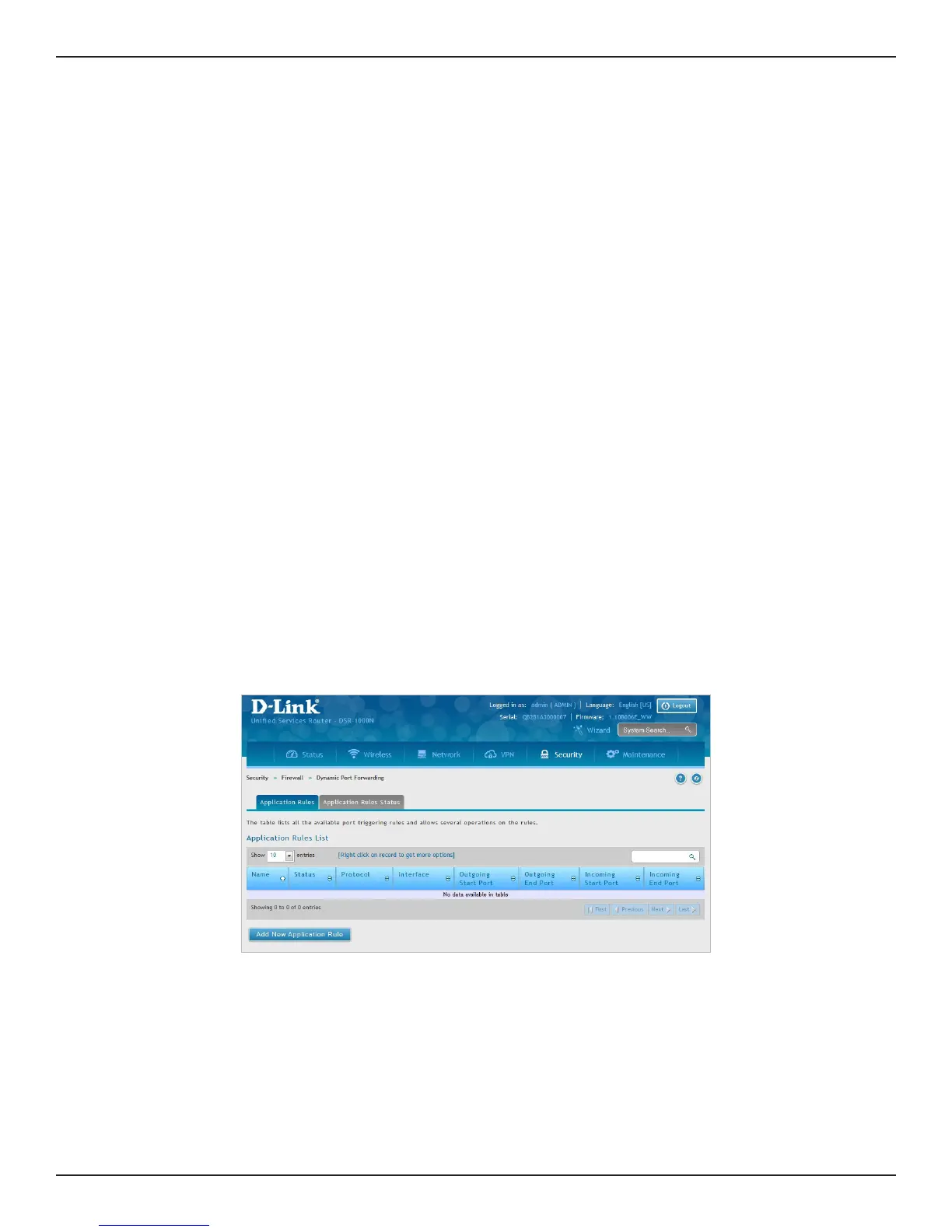D-Link DSR-Series User Manual 197
Section 8 - Security
Dynamic Port Forwarding
Path: Security > Firewall > Dynamic Port Forwarding > Application Rules
Application rules are also referred to as port triggering. This feature allows devices on the LAN or DMZ to request
one or more ports to be forwarded to them. Port triggering waits for an outbound request from the LAN/DMZ
on one of the dened outgoing ports, and then opens an incoming port for that specied type of trac. This can
be thought of as a form of dynamic port forwarding while an application is transmitting data over the opened
outgoing or incoming port(s).
Port triggering application rules are more exible than static port forwarding that is an available option when
conguring rewall rules. This is because a port triggering rule does not have to reference a specic LAN IP or IP
range. As well ports are not left open when not in use, thereby providing a level of security that port forwarding
does not oer.
Note: Port triggering is not appropriate for servers on the LAN, since there i s a dependency on the LAN device making
an outgoing connection before incoming ports are opened.
Some applications require that when external devices connect to them, they receive data on a specic port or
range of ports in order to function properly. Th e router must send all incoming data for that application only on
the required port or range of ports. The router has a list of common applications and games with corresponding
outbound and inbound ports to open. You can also specify a port triggering rule by dening the type of trac
(TCP or UDP) and the range of incoming and outgoing ports to open when enabled.
1. Click Security > Firewall > Dynamic Port Forwarding > Application Rules tab.
Application Rules
2. Right-click an entry and select either Edit or Delete. To add a new schedule, click Add New Application
Rule.

